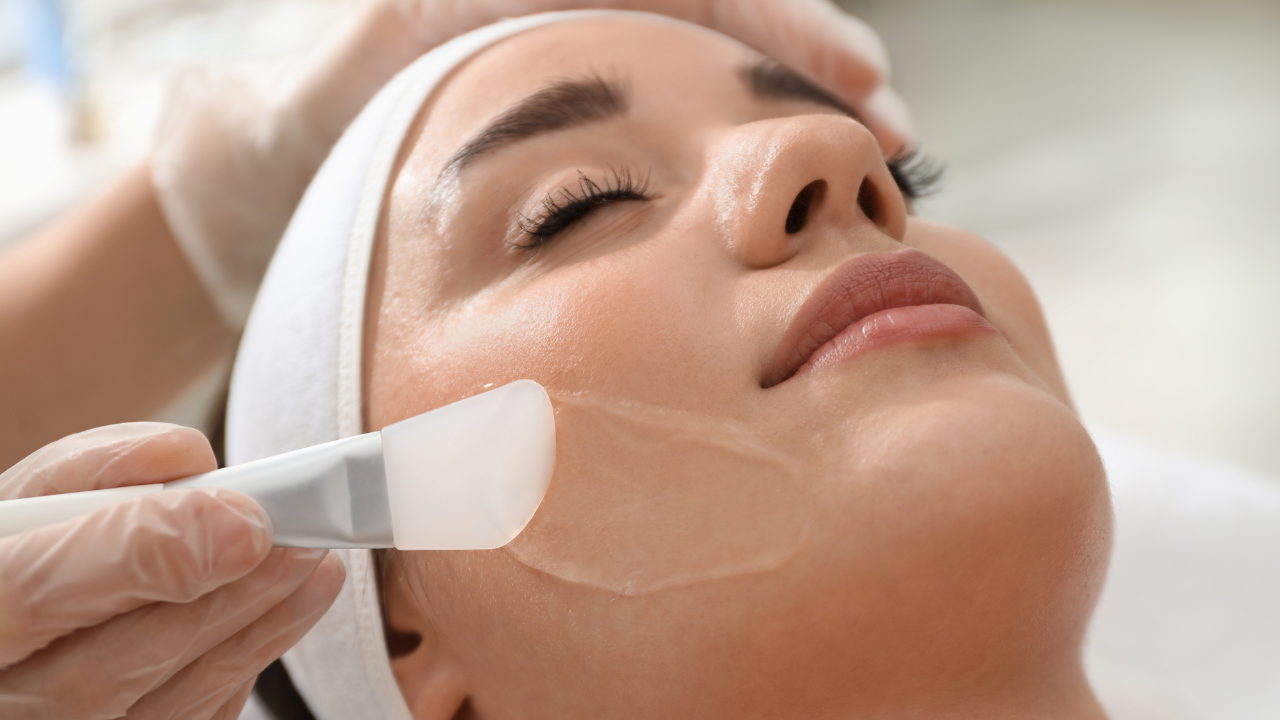One among the most popular of cosmetic procedures, a chemical peel is designed to rejuvenate your skin by removing its top layers, which are dead and lifeless, and exposing fresher, younger skin. However, many who consider this treatment are concerned about the potential pain associated with the procedure. Subsequently, is a chemical peel painful? This article further looks into the process and the types of chemical peel.
Getting to Know Chemical Peels
In a chemical peel, a chemical solution is applied to the skin, causing it to exfoliate and peel off. It can help improve fine lines, wrinkles, acne scars, and hyperpigmentation. The depth of treatment depends on the type of peel that has been applied. The three main types of chemical peels are:
1. Superficial Peels: These use mild acids like alpha-hydroxy acid to lightly exfoliate the epidermis, and can be safely used on any skin type, usually causing discomfort to a minimum.
2. Medium Peels: This is when medium-strength acids, like trichloroacetic acid, are applied to the middle areas of skin and can reach the outer layers for more striking effects. These peels aid in the deep level of treatment for wrinkles, scars, and pigmentation problems.
3. Deep Peels: These reach deeper into the skin with the use of strong acids, specifically phenol. They produce dramatic improvements but require a longer recovery time and are suitable for just a few types of skin.
Does a Chemical Peel Hurt?
Pain can range in nature according to the type of chemical peel. Individual peel pain levels are summarized below:
Superficial Peels
Superficial peels are generally well tolerated and usually cause little discomfort. The patients can feel a slight tingling sensation or a sensation of stinging at the time of applying the chemical solution, but such feelings are not strong and are usually temporary. The skin can feel tight or dry post-treatment, but this is usually transient and can easily be managed by moisturizers.
Medium Meels
Patients undergoing medium peels may experience more discomfort than those receiving superficial peels. Most patients mention experiencing a burning or stinging sensation during the procedure, at times persisting for a few minutes. Days following the procedure, the skin is usually reddened and swollen like a sunburn. Cool compresses and over-the-counter pain relief medication can manage these symptoms.
Deep Peels
Deep peels are the most powerful and tend to be very painful. A local anesthetic or sedative can be applied during the procedure so that the perception of pain is minimized. The patient might feel a very severe burning sensation during application, strong redness of the skin, swelling, and pulsating pain. The recovery process is huge and may even take several weeks, so handling pain will be a priority. Your dermatologist may prescribe pain relief medication to manage discomfort.
Managing Discomfort
Discomfort can generally be managed and minimized with any type of chemical peel:
– Pre-Treatment Preparation: Make sure to follow the pre-treatment advice provided by your dermatologist. Generally, this involves preconditioning of your skin for the peel using some products.
– During Treatment: Indicate to your practitioner any discomfort. He or she will be able to modulate the treatment, or may do cooling measures that will lessen the sensation.
– Aftercare: Prevention is obviously better than cure, so all that is required is for one to follow to the letter all requirements for after-treatment care in order to induce healing and reduce discomfort. Generally, this would involve avoiding exposure to the sun, using mild skin products to keep the skin moist.
So, do chemical peels hurt? The answer really depends on the kind of peel and the pain tolerance of the patient. Superficial peeling is almost painless, medium peeling is really painful, and deep peeling is quite aggressive but yields huge results. Proper preparation and aftercare play a key role in controlling discomfort and enabling the best possible results. Always consult with a qualified dermatologist to determine the most suitable type of chemical peel for your skin and to discuss pain management strategies. Understanding the process and potential pain of a peel can give you a little bit more insight into whether or not the treatment would be worthwhile. Book a free, no-obligation consultation with one of our professionals to learn more about our chemical peel service and how it can achieve the results you’re looking for.




